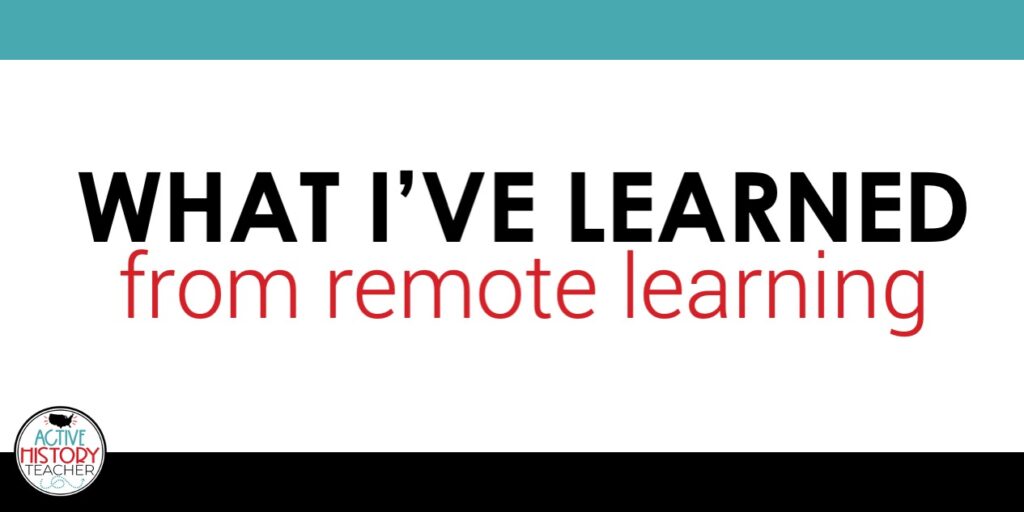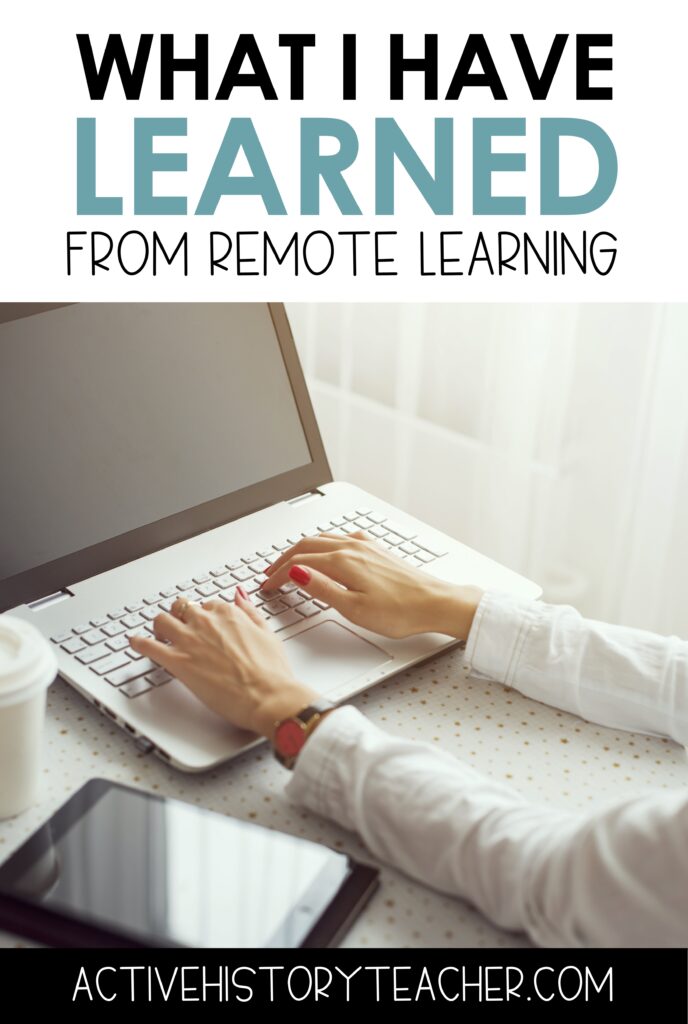
As a secondary US History teacher, I teach students both live and remote at the same time. I think by now we can all agree – remote learning is hard. Way harder than I think any of us imagined it would be.

Here my “take-aways” from teaching in this CRAZY format.
Planning and organization is critical.
I have had to recreate several activities (some of them multiple times) because I didn’t think them through. Moving forward, I now know that the upfront planning and organization will save me time if I do it “right” the first time.
Keep it simple.
After about a week of school, I kept getting feedback from students that they were struggling with all of their Canvas classes. I took class time to have students share their concerns and frustrations. After seeing what they were struggling with, it helped me realize that I can do more on my end to help them. For example, I started grouping assignments within each modules with emojis to help them visualize what topics go together.
Communication is key.
I require my students to sign up for Remind. Students can quickly message me if they have a question and I can quickly respond. I also send a weekly email that summarizes the lessons for the week and highlights due dates and expectations.
Have a back-up plan.
So far this year, the internet has gone down 3 times. Canvas and Zoom have gone down twice and Google has had several “spinning days” – such is life with remote learning! For my remote students, I just tell them to try again later. For my in person students, I need a back-up plan. I’ve learned to keep a class set of whatever we are doing that day as a “just in case.” If we don’t use them, then I just keep them for future use. I’m glad I’ve done this, as we’ve needed to use them several times now!
Relationships over content.
This year, that is my mantra. Along with “keep it simple.” Building relationships over zoom is hard. Really hard. Most of my students don’t want to turn on their cameras, and I get it. One of the ways I’ve built relationships is my having open zoom sessions where students can talk with me and others about anything. We’ve had the best zoom sessions talking about football, restaurants, first dates and TikTok. We also take a break from content and do a fun activity like my favorite emoji activity.
Set your boundaries.
We COULD work 24/7. The first few weeks, I came close to it. Then I realized I was taking away from my family. I get to work early and crank out as much as I can before 1st period. Reserve your weekends for your family.

Learn from others!
Erin from Let’s Cultivate Greatness says, “I’ve always been an organized front loader—spending the time creating and giving my students all the tools they need (or don’t even know they need!) from the start. This year, I think it has been saving me so many confused student emails! I’ve been putting directions everywhere: on the Canvas assignment, in a bright blue color off to the side of the Google Slides assignment file, typed on the slides in my lecture videos as I verbalize them.”
Erin also gives the best advice ever when she says “I also have simply been cutting out activities that just don’t translate easily or well to a fully remote setting. I know this sounds like a silly tip, but honestly, the stress and extra workload it has saved me has been freeing. It’s for one year, so I’m going to let myself be okay with it.”
I’ve learned so much from Julia from History from the Middle. Her daily agenda slides have helped me stay organized! Check out her Instagram highlights for tons of remote teaching tips!
Let things go.
We just need to get through this year of remote learning. Do the best you can and move on. YOU are a great teacher. Let 2020 be 2020. Move on.

